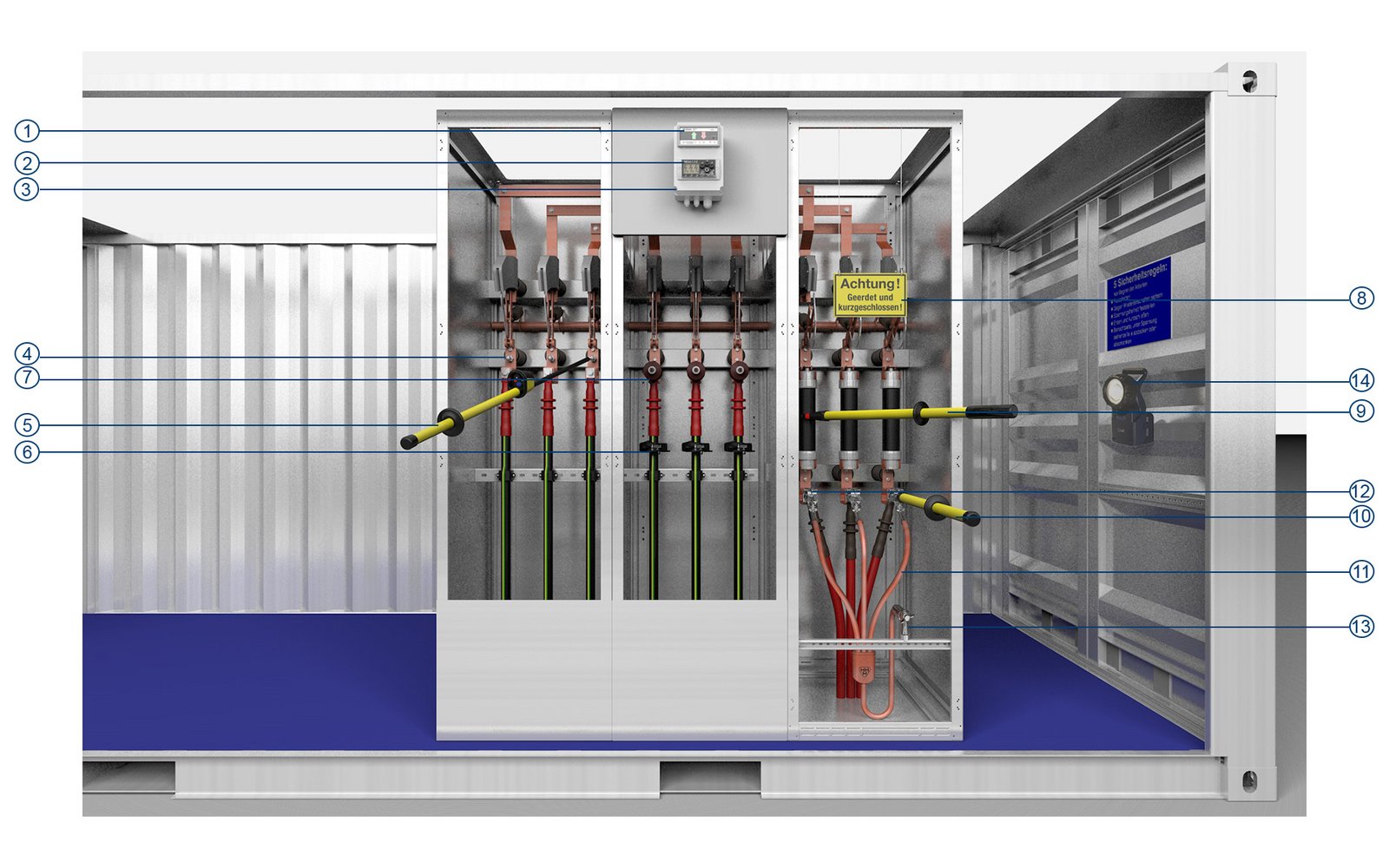Substation accessories

- Short-circuit and earth fault indicators
- Spannungsprüfsysteme
- Aufbaugehäuse
- Phasenfestpunkte
- Spannungsprüfer
- Stromsensoren
- Spannungssensoren
- Hinweisschilder
- Sicherungszange
- Betätigungsstangen
- Erdungs- und Kurzschließvorrichtungen
- Phasenanschlussklemmen
- Erdungsfestpunkte und Erdpotenzial-Anschlüsse
- Arbeits- und Stationsleuchte
Nothing works without accessories
In our profession, accessories are not a decorative feature, but safety-related equipment.
Irrespective of whether during maintenance you are removing dirt or moisture from the system to prevent fires, or you are checking a system for functionality, to be able to work safely and securely you need technical regulations to adhere to (also) thanks to high-quality technology. And last but not least, these regulations are mandatory if you, in the case of a fault, call out the repair crew to replace the blown fuse with a new one. Regulations are there to ensure maximum safety and make your job easier.
Five Golden Rules to know and follow
For example, the hot sticks work as your extended arm in step 1, disconnect completely. Easy-to-read information and warning signs indicate in step 2, secure against re-connection, that you and your colleagues are carrying out work on the power network. Whether they read “Do not switch on. Work in progress,” or for example, “High voltage – danger to life”, we are sure to have any sign you need to protect you and your employees. To ensure maximum safety directly on site after closing off the immediate area, you’ll find a diverse range of voltage detectors to use to verify absence of operating voltage (step 3). Our voltage detectors clearly indicate “Voltage Present” or “Voltage Not Present”, giving you the best assurances while you carry out your challenging work. In addition, we offer you the TP-I, a two-pole tester for capacitive test points on medium voltage switchgears. The TP-I determines the operating conditions of high voltage installations according to VDE 0105, Part 100.
By the way, our BO-A 2.0 and BO-A AC/DC voltage testers are always a good choice for any railway application.
Carry out earthingand short-circuiting is easy to do (step 4) using our devices equipped with a ball tong, universal phase clamp or a compact phase clamp. When you use the mobile earthing and short-circuiting devices correctly, you will always be in safe hands. To ensure this remains true when live parts are in your immediate work area, you must provide protection against all adjacent live parts (step 5).